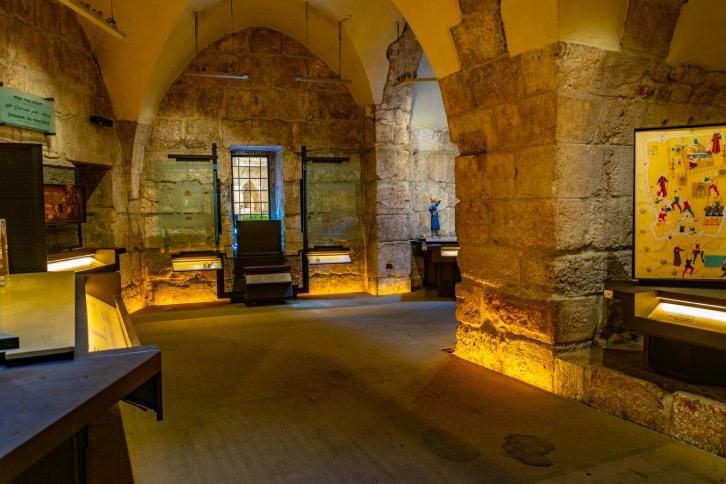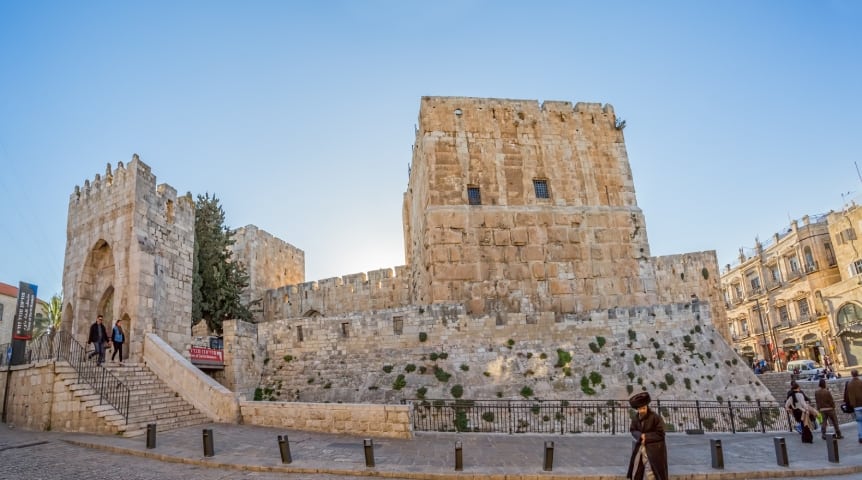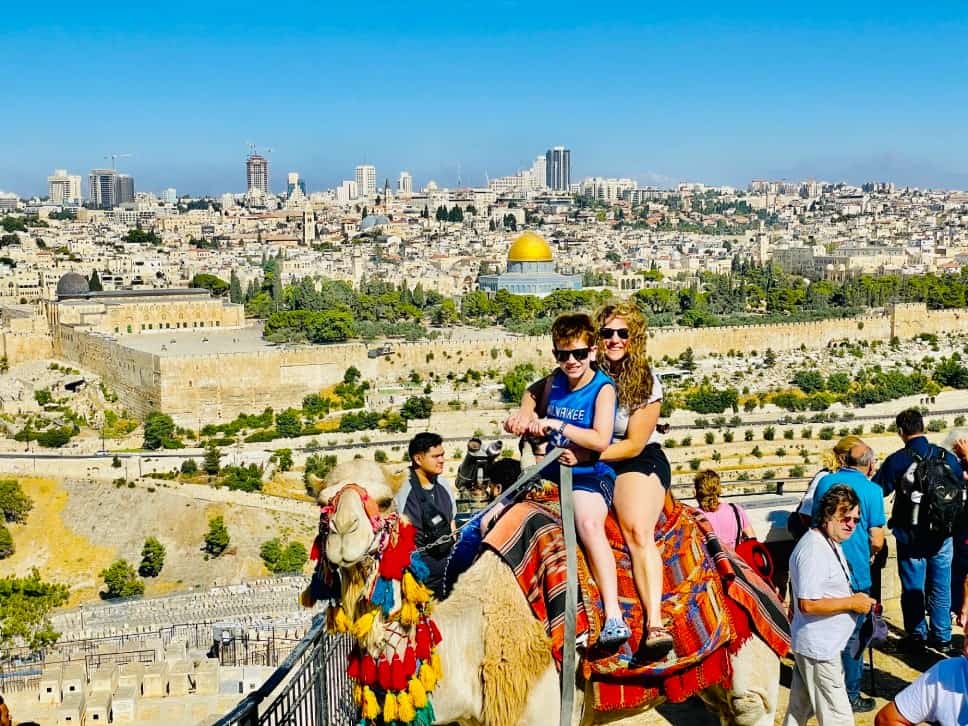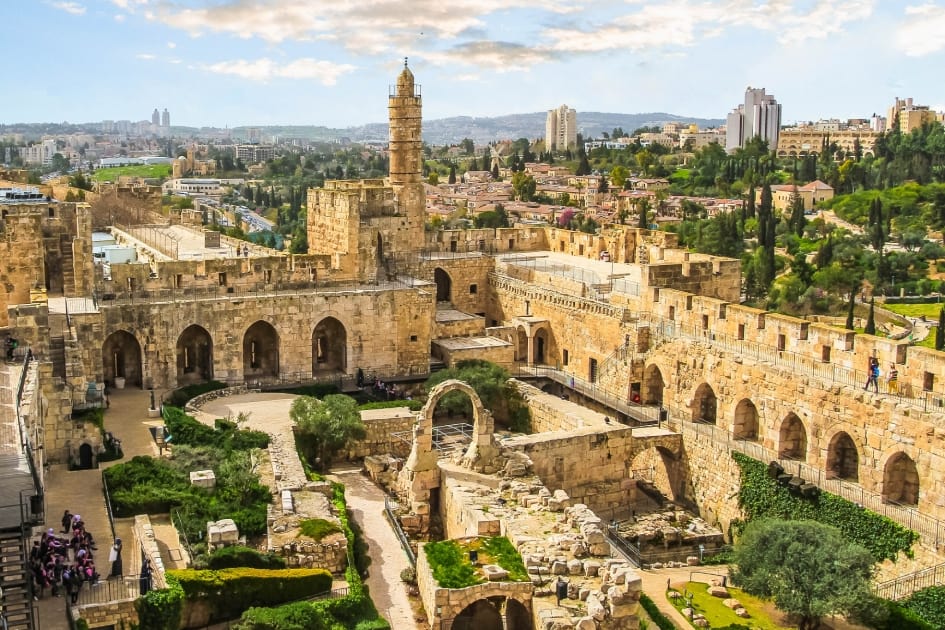Located near the Jaffa Gate, the historical entrance to the Old City, the Tower of David Museum is a medieval fortress and a historical and archaeological asset of international significance. Also known as Jerusalem’s Citadel, the Tower has been the symbol of Jerusalem for generations.

The ancient citadel dates back to the Mamluk and Ottoman periods and was rebuilt by King Herod on the site of several earlier old fortifications after being repeatedly destroyed by their Muslim enemies during the last decades of the Crusaders.
History of the Citadel
References in the Bible and archaeological findings lead to the belief that Hezekiah, King of Judea, expanded the fortifications of Jerusalem in the late 8th century BC to include the hill to the west of Temple Mount.
Fortifications were expanded further in the 2nd century. In the 1st century CE, Herod added three towers to the fortifications of the north-western corner of the hill where the Citadel stands today.

The three towers protected the city and Herod’s palace on Mt. Zion. The towers were named Mariamne, in honor of his second wife, who had been executed and buried near the towers; Hippicus, in honor of one of his friends; and Phasael, in memory of his deceased brother. Only the base of the Phasael Tower remains today.
After the destruction of Jerusalem in 70 AD, the Romans used the Citadel to house troops, and in the 4th century, the Citadel was inhabited by Christian monks. During the Byzantine era, the Citadel was erroneously associated with David’s Palace and was known as the Tower of David from that point on.
Fun Things to Do in Jerusalem

Tower of David Museum: Late Muslim Period
In 1310, the Mamluks built a citadel on the remains of Herod’s earlier fortifications, which the Ottomans expanded in the 16th century to serve as their garrison for the next 400 years. A mosque was added to the site, and a minaret was built between 1635 and 1655 on the remains of Herod’s Phasael Tower. Today, this minaret is a symbol of Jerusalem.

Under the British Mandate (1917-1948), the citadel was used as a cultural center, and under Jordanian rule, from 1948 to 1967, the citadel once again took on a military role. Following the Six-Day War of 1967, the citadel returned to Israel’s jurisdiction. The Tower of David Museum was opened in 1989.
Visiting the Tower of David Museum
Delve into the rich history of Jerusalem and learn its astounding story when you visit the Tower of David Museum. The museum features important archaeological artifacts dating back over 2,500 years, including a quarry dated to the First Temple period. The 500-year-old walls are also part of the Turkish citadel and are worth their weight in archaeological and historical gold. Take a walk along the walls and take in some incredible city views.
In addition, you can climb up the tower for sweeping panoramic views of old and new Jerusalem. Wander through the ancient rooms of the museum that have been redesigned to highlight different periods and follow the 4,000-year-old history of the fortress.
The citadel’s central courtyard features the unearthed remains dating from the Maccabees to the Middle Ages. You can also enjoy a range of multi-sensory exhibits by leading local and international artists and designers. Don’t miss the annual ‘Night Spectacular’ – a unique sound and light show where Jerusalem’s story is told through projected images of ancient stones, sound, music, and lights. Here is a link to their website.







